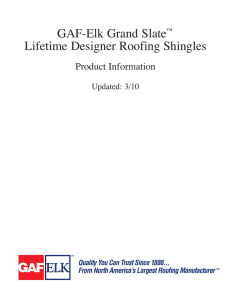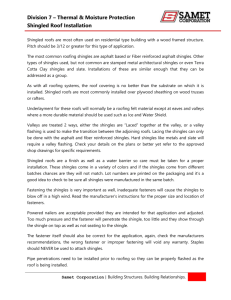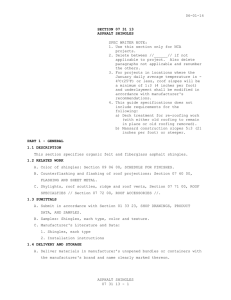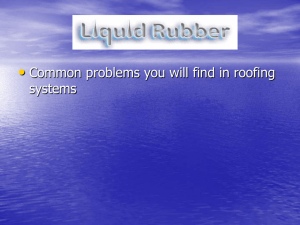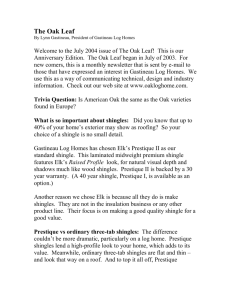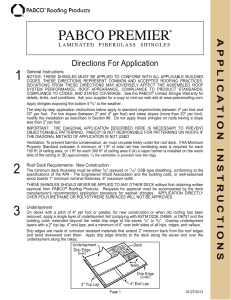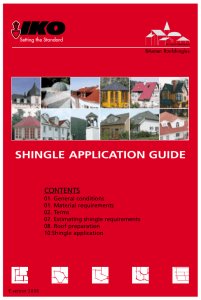Click here to print this glossary.
advertisement
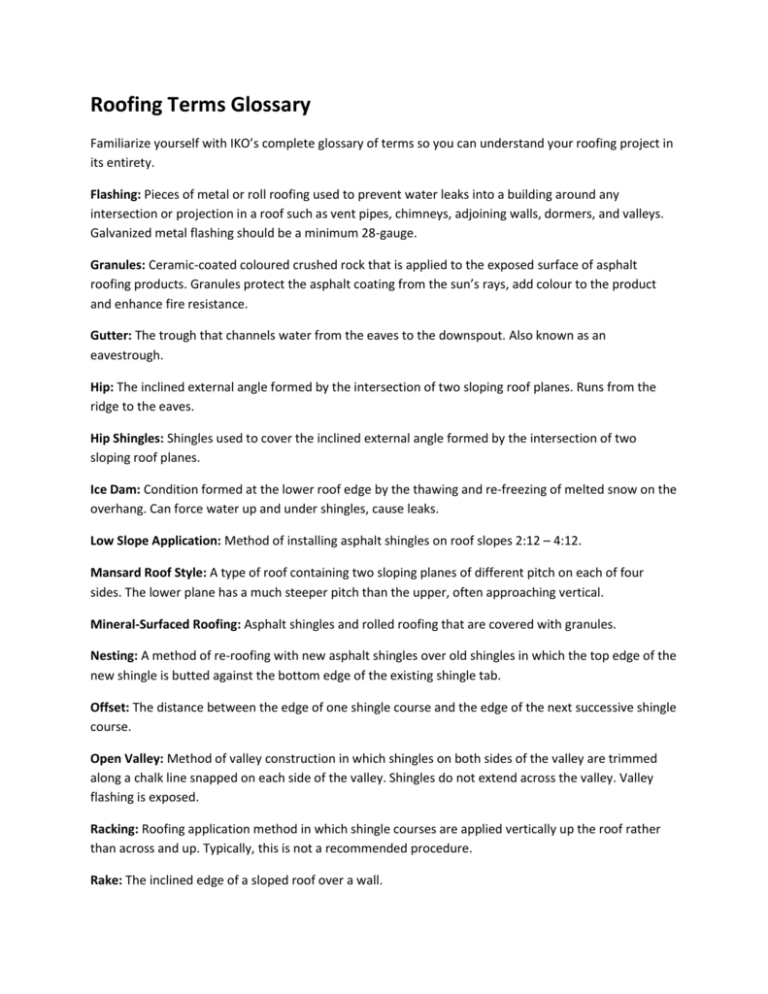
Roofing Terms Glossary Familiarize yourself with IKO’s complete glossary of terms so you can understand your roofing project in its entirety. Flashing: Pieces of metal or roll roofing used to prevent water leaks into a building around any intersection or projection in a roof such as vent pipes, chimneys, adjoining walls, dormers, and valleys. Galvanized metal flashing should be a minimum 28-gauge. Granules: Ceramic-coated coloured crushed rock that is applied to the exposed surface of asphalt roofing products. Granules protect the asphalt coating from the sun’s rays, add colour to the product and enhance fire resistance. Gutter: The trough that channels water from the eaves to the downspout. Also known as an eavestrough. Hip: The inclined external angle formed by the intersection of two sloping roof planes. Runs from the ridge to the eaves. Hip Shingles: Shingles used to cover the inclined external angle formed by the intersection of two sloping roof planes. Ice Dam: Condition formed at the lower roof edge by the thawing and re-freezing of melted snow on the overhang. Can force water up and under shingles, cause leaks. Low Slope Application: Method of installing asphalt shingles on roof slopes 2:12 – 4:12. Mansard Roof Style: A type of roof containing two sloping planes of different pitch on each of four sides. The lower plane has a much steeper pitch than the upper, often approaching vertical. Mineral-Surfaced Roofing: Asphalt shingles and rolled roofing that are covered with granules. Nesting: A method of re-roofing with new asphalt shingles over old shingles in which the top edge of the new shingle is butted against the bottom edge of the existing shingle tab. Offset: The distance between the edge of one shingle course and the edge of the next successive shingle course. Open Valley: Method of valley construction in which shingles on both sides of the valley are trimmed along a chalk line snapped on each side of the valley. Shingles do not extend across the valley. Valley flashing is exposed. Racking: Roofing application method in which shingle courses are applied vertically up the roof rather than across and up. Typically, this is not a recommended procedure. Rake: The inclined edge of a sloped roof over a wall. Release Tape: A plastic film strip that is applied to the back of self-sealing shingles. This strip prevents the shingles from sticking together in the bundle only, and does not need to be removed for application. Ridge: The uppermost, horizontal external angle formed by the intersection of two sloping roof planes. Rise: The vertical distance from the eaves line to the ridge. Run: The horizontal distance from the eaves to a point directly under the ridge. One half the span. Self-Adhered Eave and Flashing Membrane: A self-adhering bituminous waterproofing shingle underlayment designed to protect against water infiltration due to ice dams and wind-driven rain. Self-Sealing Strip or Spot: Factory-applied adhesive that bonds shingle courses together when exposed to the heat of the sun after application. Shading: Slight differences in shingle colour that may occur as a result of normal manufacturing operations. Slope: The degree of roof incline expressed as the ratio of the rise, in inches, to the run, in inches. Soffit: The finished underside of the eaves, which should contain holes or perforations to provide air intake for attic ventilation. Starter Strip: Asphalt roofing applied at the eaves. Provides protection by filling in the spaces under the cut-outs and joints of the first course of shingles. Step Flashing: Flashing application method used where a vertical surface meets a sloping roof plane. Tab: The exposed portion of strip shingles defined by cut-outs. Underlayment: Asphalt saturated felt used beneath roofing to provide additional protection for the deck. Valley: The internal angle formed by the intersection of two sloping roof planes. Vent: Any outlet for air that protrudes through the roof deck (such as a pipe or stack). Any device installed on the roof, gable, or soffit for the purpose of ventilating the underside of the roof deck. Woven Valley: Method of valley construction in which shingles from both sides of the valley extend across the valley and are woven together by overlapping alternate courses as they are applied. The valley flashing is not exposed.
